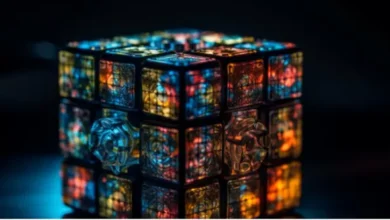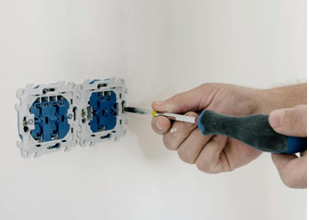3D Printing VS. CNC Machining of Plastic Parts
3D printing and CNC machining are both processes that can be used to machining plastic parts. Both processes have their own advantages and disadvantages, and the best choice for a specific application will depend on the specific requirements of that application.
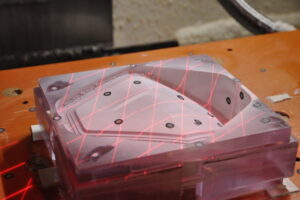
3D printing is a process of making three-dimensional solid objects from a digital file. The creation of a 3D printed object is achieved using additive processes, where successive layers of material are laid down in different shapes. 3D printing is typically faster and more affordable than CNC machining, as it does not require the same level of setup time, but it produces parts with lower dimensional accuracy and strength. So, 3D printing is best suited for applications where speed and affordability are paramount, and dimensional accuracy and strength are not as important.
CNC machining is a subtractive manufacturing process, where parts are created by removing material from a solid block using precision cutting tools. CNC machining is best suited for applications where dimensional accuracy and strength are paramount, and speed and affordability are not as important.
In terms of part accuracy, CNC machined parts are typically more accurate than 3D printed parts. This is because the cutting tools used in CNC machining can remove very small amounts of material (on the order of microns), while 3D printers have a minimum layer thickness that is typically on the order of tens or hundreds of microns.
As for surface finish, CNC machined parts can have very smooth surfaces, while 3D printed parts typically have a rougher surface finish. CNC machining is generally have a faster lead time than 3D printing. This is because CNC machined parts do not require the same amount of time to cure as 3D printed parts. And in terms of cost, CNC machining is generally more expensive than 3D printing. This is because CNC machines are more expensive to purchase and operate than 3D printers.
3D printing with plastic parts
3D printing with plastic parts is a process of additive manufacturing whereby objects are created by successively adding material layer by layer. It is achieved using an additive printer which deposits successive layers of melted plastic onto a platform, slowly building up the desired object. This technology has revolutionized manufacturing and allows for the creation of complex objects which would otherwise be impossible to produce using traditional methods.Plastic is the most commonly used material for 3D printing, due to its versatility, affordability and ease of use.
A wide range of different plastics can be used in 3D printers, each with its own unique properties. The type of plastic used will generally be determined by the intended use of the final printed object. For example, plastics that are strong and durable are often used for printing functional parts, while softer plastics may be used for printing toys or other objects that do not need to be as strong.The plastic 3D printing process is generally very similar regardless of the type of plastic being used.
First, the desired object is designed using computer-aided design (CAD) software. The CAD file is then sliced into thin layers and fed to the 3D printer. The printer then melts the plastic and deposits it onto the build platform layer by layer, slowly building up the desired object. Once the object is complete, it is typically allowed to cool and solidify before being removed from the platform.3D printed plastic objects can have a wide range of applications. They can be used for both functional and decorative purposes. Common examples of 3D printed plastic objects include toys, prosthetic limbs, eyeglass frames, and cell phone cases.
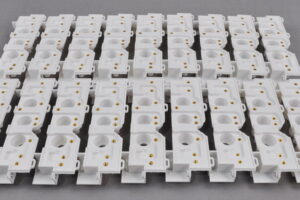
Different material used between CNC plastic machining and 3D printing
CNC plastic machining and 3D printing are both methods of manufacturing that use different materials. Each method has its own advantages and disadvantages when it comes to the type of material that can be used.
CNC plastic machining is more versatile than 3D printing when it comes to the types of materials that can be used, including acrylonitrile butadiene styrene (ABS), polycarbonate (PC), and polyethylene terephthalate (PET). These plastics have different properties that make them suitable for different applications. For example, ABS is a strong plastic that is often used in the construction of prototypes and products that will be subject to high stress or heavy use. PC is a clear plastic that is often used in the manufacture of eyeglasses and other optical products. PET is a lightweight plastic that is often used in the food and beverage industry.
3D printing is limited to using filaments made from thermoplastic materials, such as acrylonitrile butadiene styrene (ABS) or polylactic acid (PLA). ABS is a strong plastic that is often used in the construction of prototypes and products that will be subject to high stress or heavy use. PLA is a biodegradable plastic that is often used in the manufacture of food-grade products.
3D printing is faster than CNC machining, and it does not require the use of expensive tools and dies. 3D printing can also be used to create complex shapes that would be difficult or impossible to create with CNC machining.
Advantages of CNC plastic machining
CNC plastic is a great alternative to 3D printing for many reasons. First, CNC machining can create parts with much tighter tolerances than 3D printing. This is because the motion of the cutting tool is very precise and controlled. Second, CNC machined parts can have smoother surfaces than 3D printed parts. This is because the cutting tool leaves a smooth surface finish on the material. Third, CNC machining can be used to create parts with complex geometry that would be difficult or impossible to produce with 3D printing. Finally, CNC machined parts are typically stronger and more durable than 3D printed parts. This is because the material is cut away cleanly, rather than being built up layer by layer.
Conclusion
When it comes to choosing a manufacturing process for your plastic parts, there are many factors to consider. Both have their own pros and cons that you should take into account before making a decision.
3D Printing Pros:
-Can create highly complex shapes that would be difficult or impossible to create with other methods
-Ideal for prototypes or low volume production runs-Relatively fast turnaround times
3D Printing Cons:
-Parts can be weaker than those made with other methods-More expensive per part, especially for larger parts
-Printer setup can be time-consuming
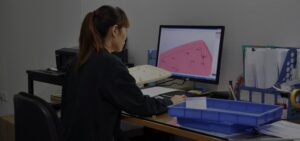
CNC Machining Pros:
-Can create very accurate and precise parts-Ideal for large production runs
-Parts can be made from a variety of materials, including metals
CNC Machining Cons:
-More expensive than 3D printing, especially for small parts
-Setup time can be lengthy
-Machines require frequent maintenance
So, which process is right for you? It really depends on your specific needs. If you need a quick prototype or low volume production run, 3D printing may be the way to go. If you need large quantities of parts that are extremely accurate and precise, CNC machining is probably your best bet.
VIST FOR MORE ARTICLE : techdefrag.com
